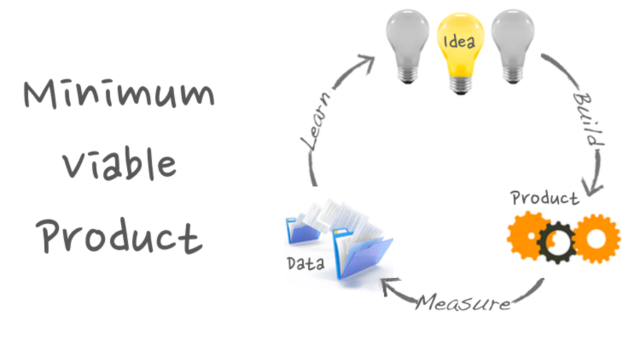
Minimum Viable Product (Planning) 2/2
3. Decide What Features to Build
In this stage, you will be able to discern what features to includ e in your minimum viable product, as well as the features to includ e on the product roadmap that are a lower priority.
a) Use opportunity statements to finalize your features. Using your opportunity statements from the previous step, finalize what features you want to build out. At this stage in the MVP development process, you will want to create feature sentences. For our Pet Adopters that are applying to adopt animals, for example, the opportunity statement “How might we expedite the application process?” could become “Reduce application processing time by 10%.”
b) Provide a breakdown of the features to includ e in the product roadmap. List the user and the specific opportunity statements, and provide a breakdown of the features to includ e in the product roadmap.
c) Use a prioritization matrix (or similar method) to prioritize features. This step helps you identify where you can make the most impact with your product in relation to the urgency of the feature. Using a prioritization matrix, you can make the final decision on what absolutely needs to be includ ed in your minimum viable product, and what features can be includ ed in later releases. Below is our recommended format for your MVP prioritization matrix.
Why Start With an MVP?
Test Assumptions and Build a Business Case
The core benefit of an MVP is the ability to create new ideas and test assumptions. An operational MVP allows you to take a version of your product to market to test your initial assumptions. In the process, you will generate new ideas grounded in user behavior research which will shape the subsequent versions of your product.
An MVP lets you test your business concept early before you commit to a feature-heavy product. You can take your product to market quickly and cut costs in the long run.
Win Stakeholder Buy-in
MVPs are critical for seeking funding from stakeholders. Whether you’re looking for support from internal or external investors, an MVP definitely strengthens your position. You cannot go to potential stakeholders with a first-stage plan; investors require an established business case and an operational application that demonstrates the market validity and showcases growth potential. With an MVP, you can prove the merit of your product and secure funding for future development.
An Iterative Process Builds Value Over Time
With an MVP, you’re going to market with only core functionality and as your product evolves, you can learn from your growing user base. Insight from user data allows your product team to make research-based decisions about each stage of development, including what features to prioritize, how to improve ROI, and exactly where to allocate budget.
Cost Efficient
Mature, feature-rich apps are a result of years of development and have a cost to match; however, MVPs are built iteratively allowing costs to be spread over time. Typically, the budget for further development is a reinvestment of revenue generated from earlier versions of the MVP. Building an MVP allows you to drive the highest value for your business while dramatically minimizing the cost.
Mitigate Risk
When you start development with an MVP you’re making risk easier to manage by investing a small amount of money to test the market. This strategy also affords you room to react quickly to unexpected changes based on customer and market research.
What Features to Avoid in an MVP
Cool Add-ons
These features can be defined as features that serve only an aesthetic purpose. They don’t actually add value to the MVP. An example would be a social media integration, which is a nice to have but makes more sense to add in the later stages of development.
Copycat Features
Copying every feature your competitor has in your MVP is most definitely not recommended. When you try to add as many features as a more established app, you’re adding scope to the project which subsequently affects the timeline and budget. The purpose is to develop an MVP that aligns with your business goals.
Features Requested By Early Users
Even though user feedback shapes each stage of your application, you should still proceed with caution. Implementing user-requested features should be based on thorough research and analysis over time. Adding everything right away can harm the user experience.
